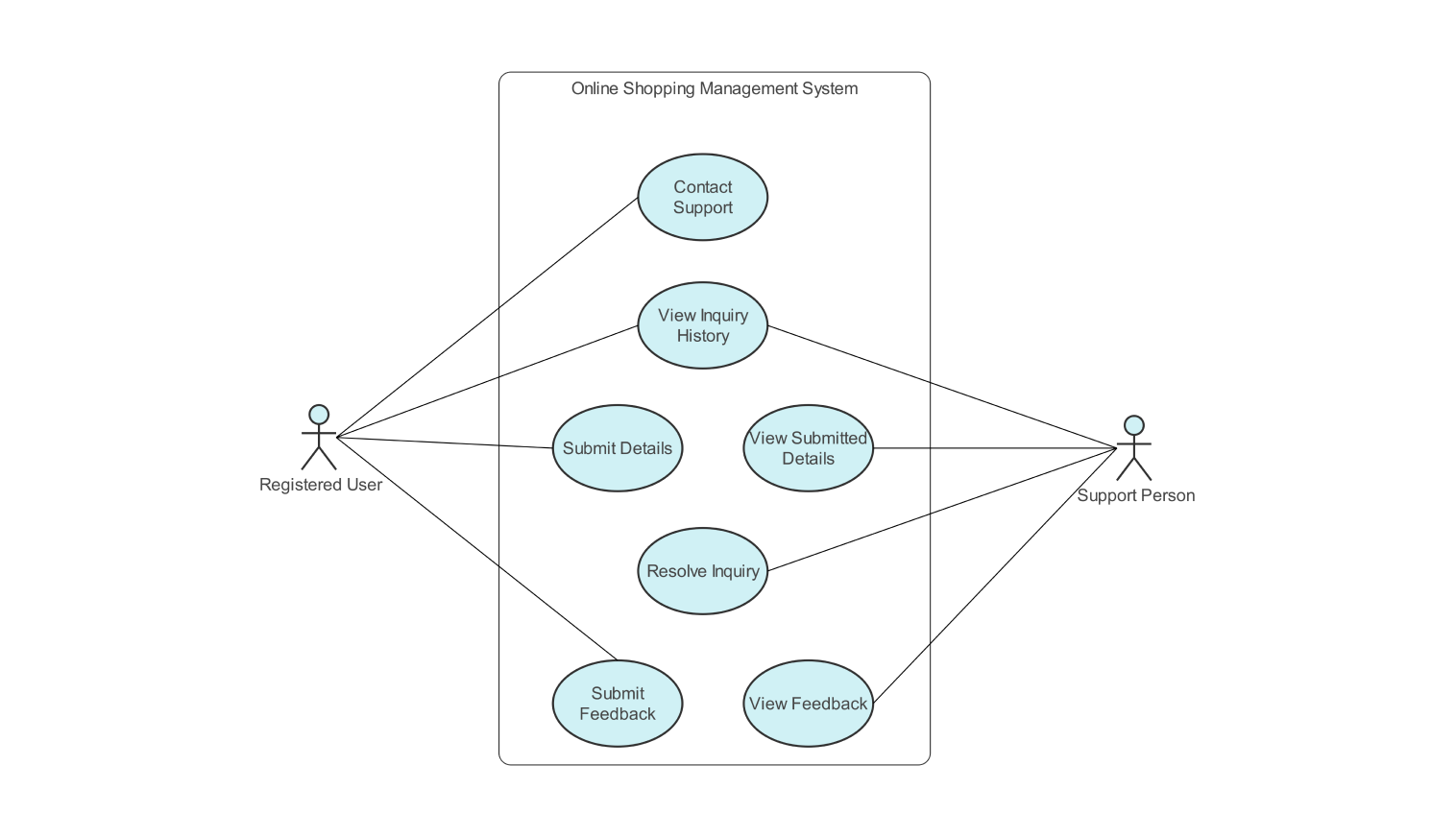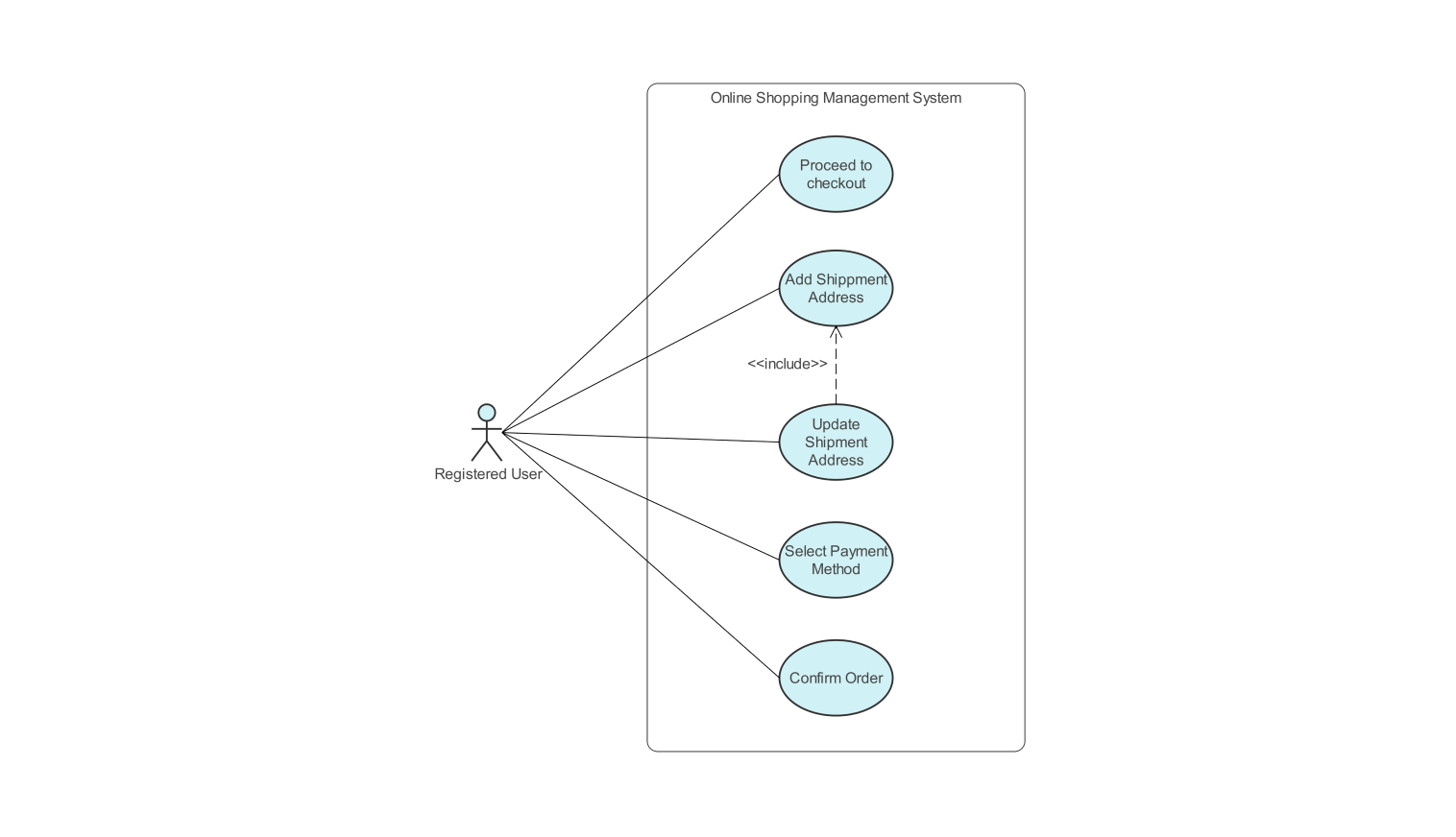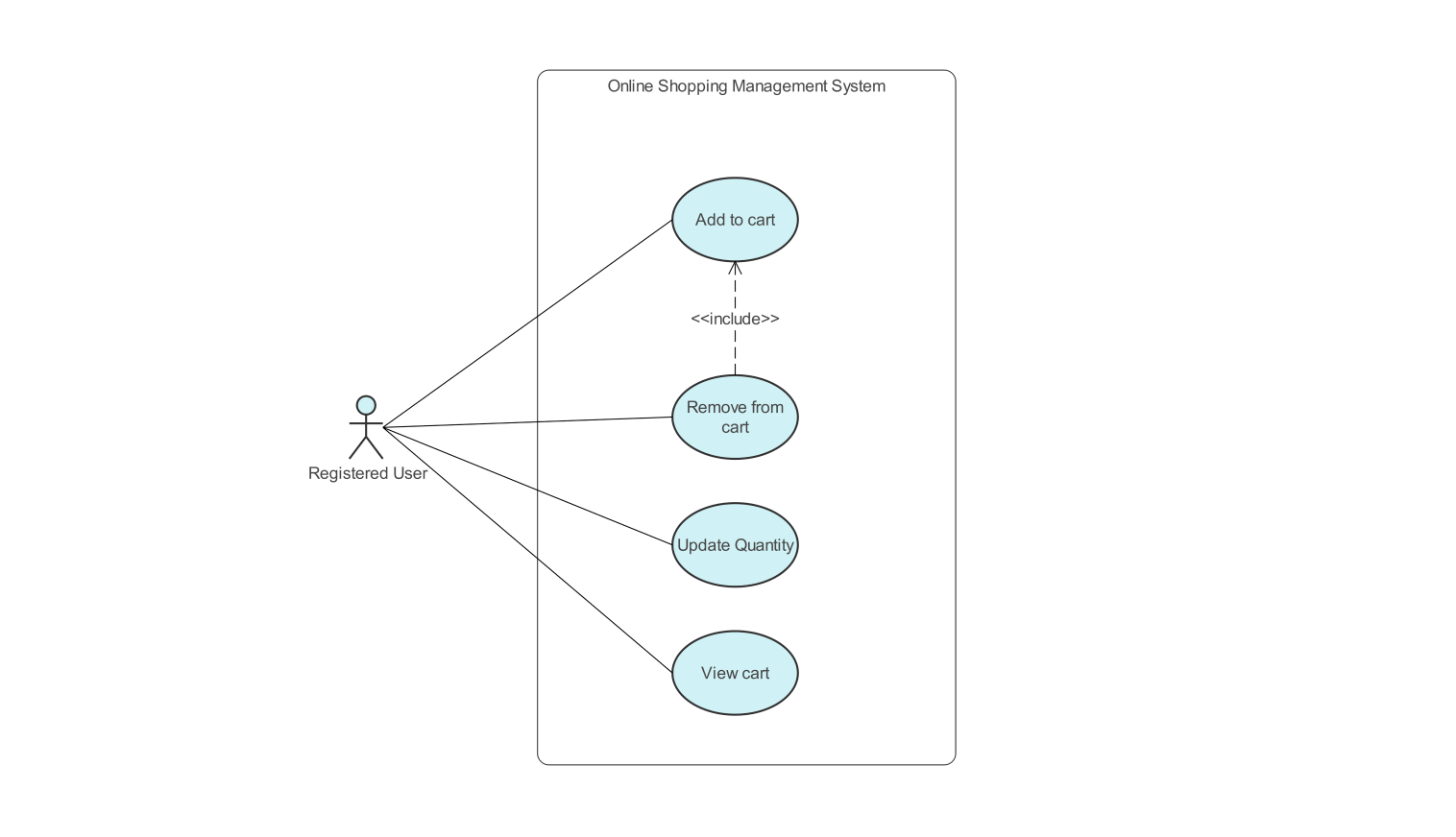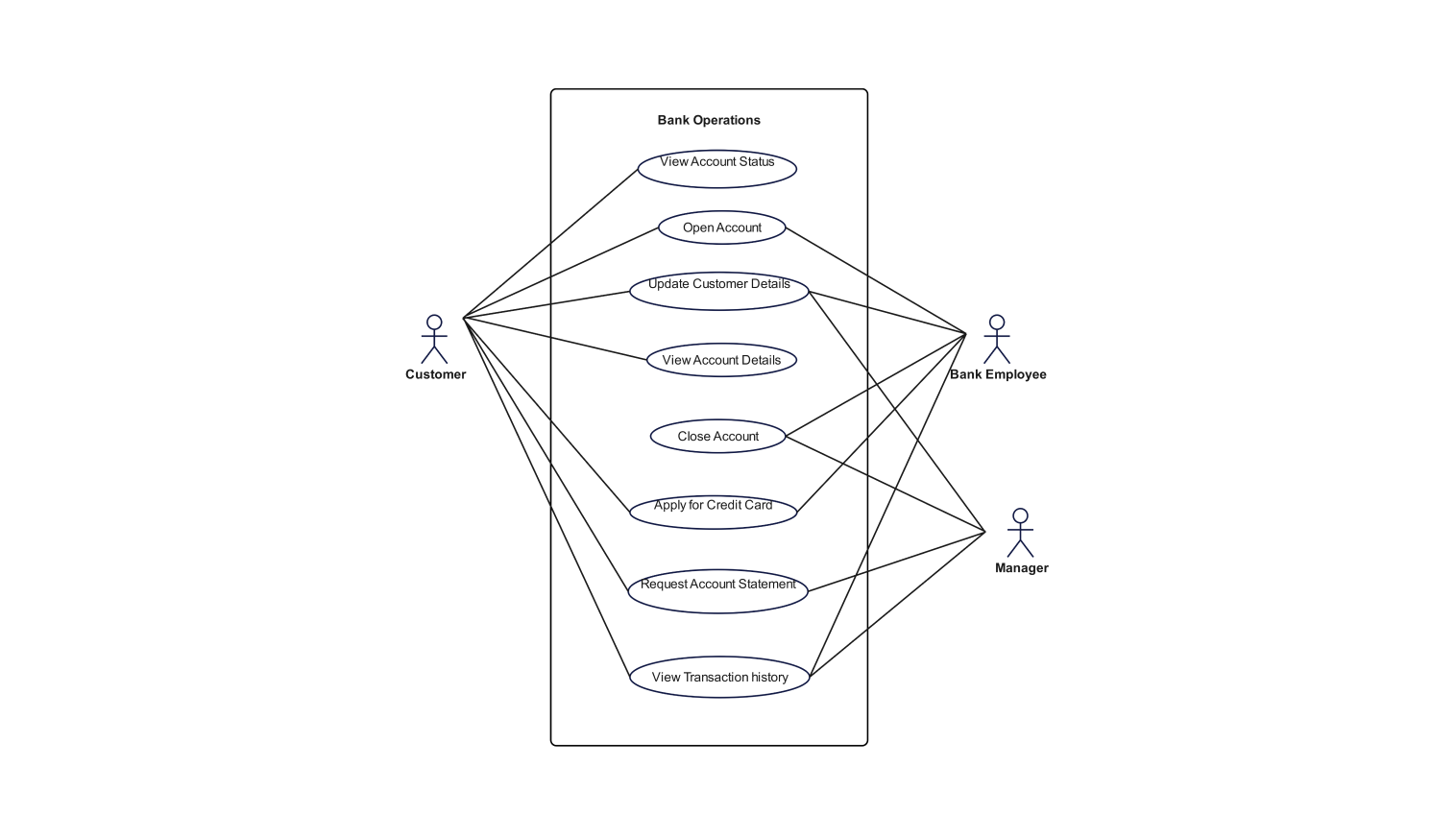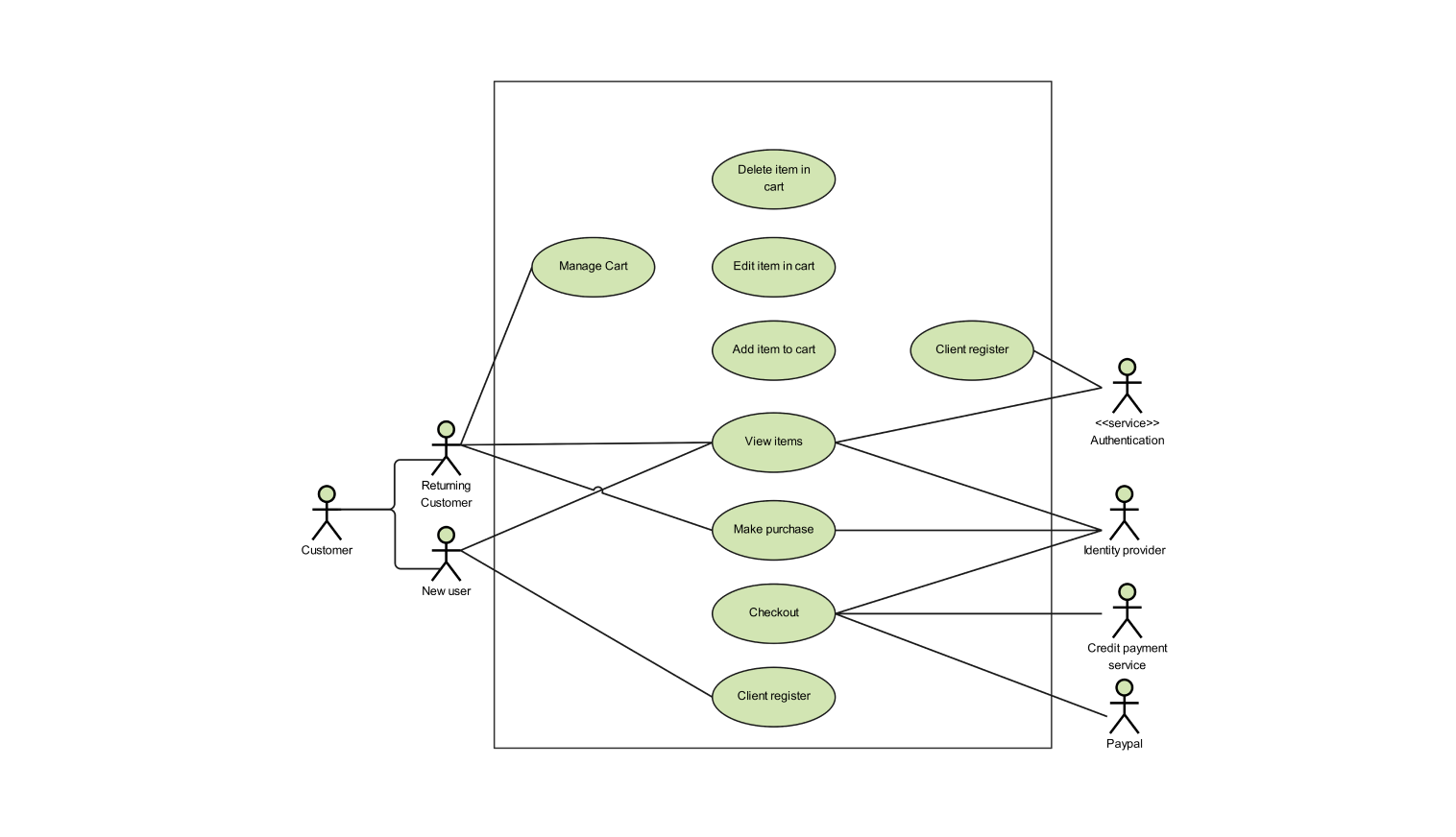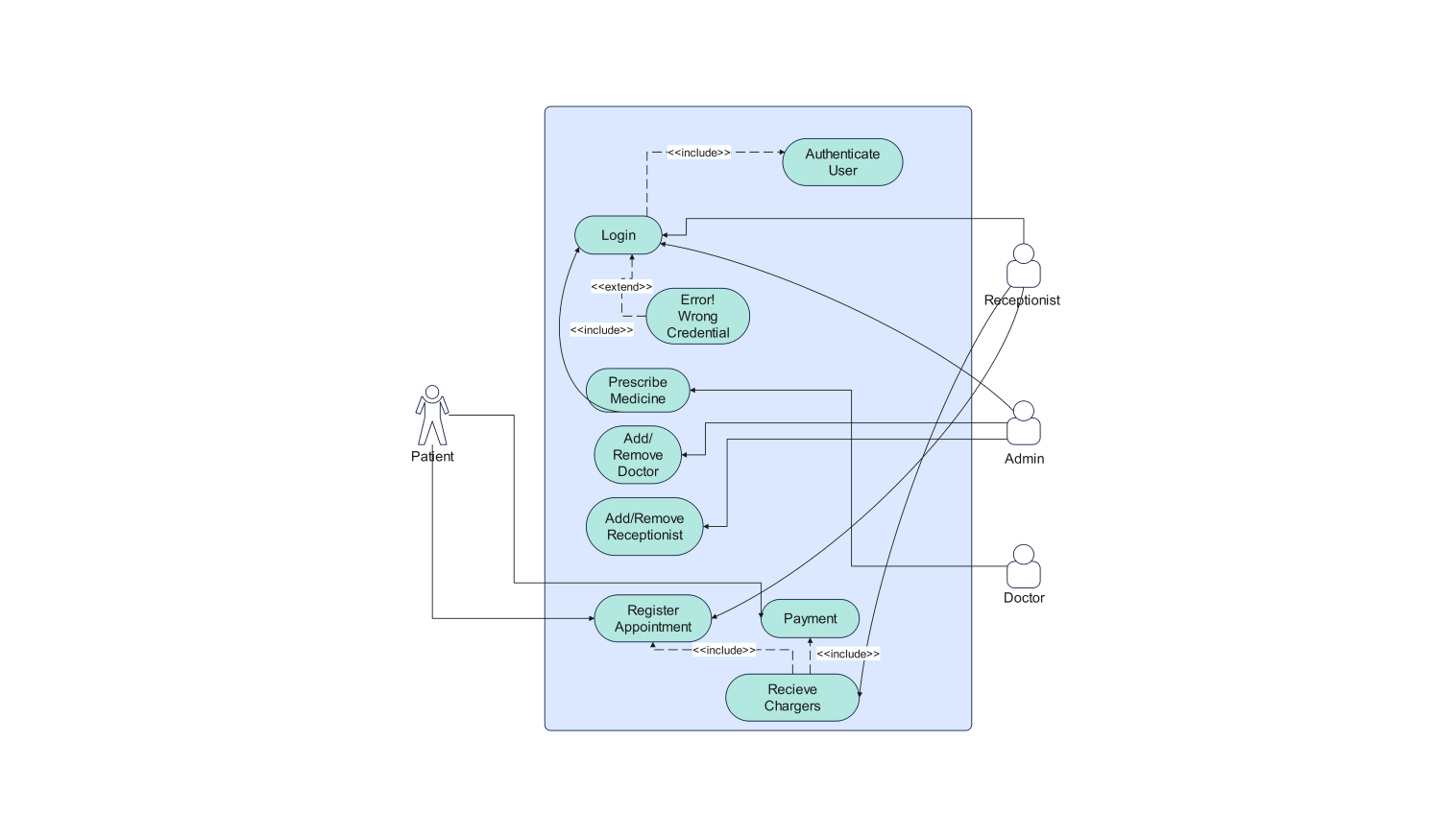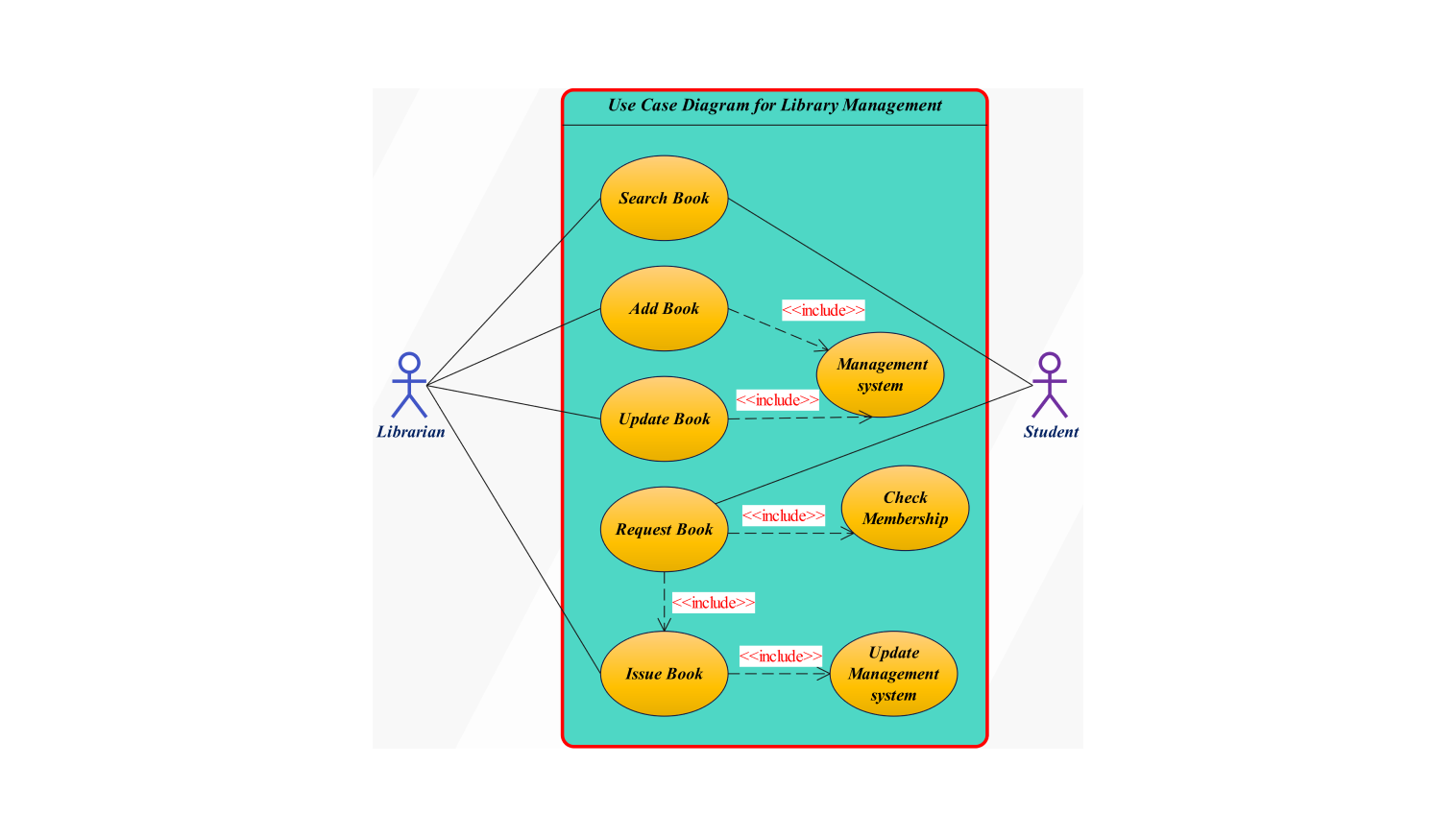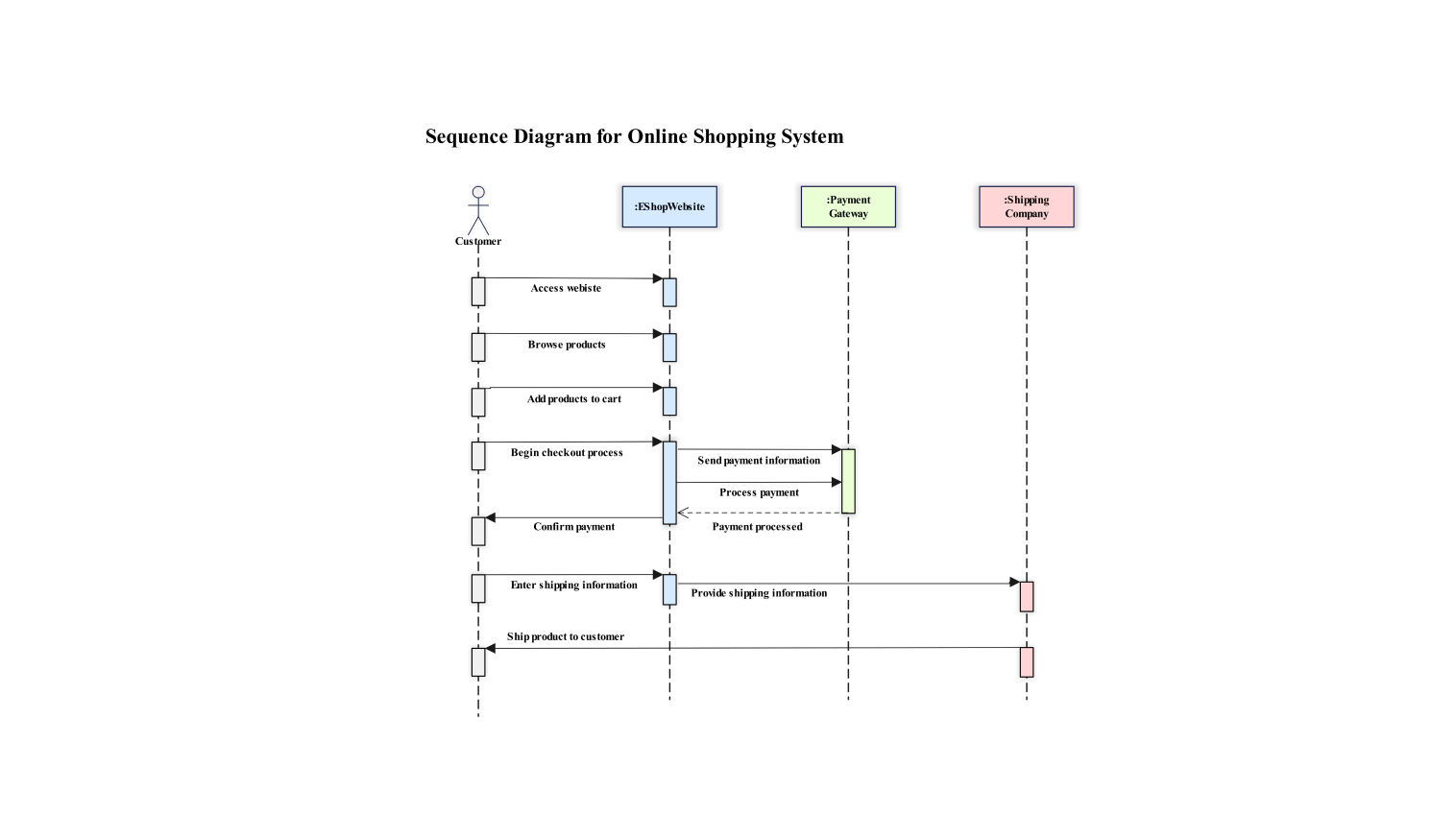- All templates
- UML diagram templates
- Order history use case diagram
About this use case diagram example
Following is a use case diagram for an online shopping system. The diagram gives an overview of the core functionalities within the management system. Mainly, it highlights the ordering process within the system.
The diagram consists of various use cases that involve: view history, canceling order, apply for refund, and tracking shipments. The use case view orders history involves displaying the user's order history over time.
Through the use case cancel order, the user can cancel an order. After giving the reason, the users can cancel the order registered on the management system. After canceling an order, the user can request a refund for the payment paid. This is represented using the apply for a refund use case.
The user after registering their order can also track it over the application. Here the application lists the current status, location and estimated time for delivery of the order.
In the following use case diagram both the admin and the registered user can view the order history and cancel an order after placement. After the cancellation of the order, the user can request a refund. The registered user can also view the shipment details associated with an order.
How to use the template
Click on Use this template to use it. After the template opens, you can customize the diagram by dragging and dropping new shapes from the libraries present on the left side as per the requirement of your system.
Edit the text. Style the lines, boxes, and text by clicking on the respective elements. You can also save some common elements in your libraries for future use when creating similar diagrams.
Choose a format to save it for later or share it with others. Click on Export to choose the format of your file (.eddx, .pdf, .png, .jpg) to export the file.
Benefits of the use case diagram
Through this use case diagram, one can get a clear understanding of the core functionalities involved in an online shopping system. Mainly you can get a brief overview of the order system within the online shopping system.
Whether you’re a student, teacher, or a developer this diagram will help you in your understanding of the ordering process. Use case diagrams also come in handy during the planning of an expansion plan. Here software developers can use this diagram to better understand the implemented architecture of the system.
FAQs about the use case diagram
-
How do you make a use-case diagram?
Following are the steps you can follow when creating your use case diagram:
- Identify the use cases within the system.
- Identify the actors that will interact with the use cases or the overall system.
- Identify the relationship between the actors and the use cases involved.
- Draw your UML diagram by placing the use cases, and actors and establishing the relationship between them.
When creating a use case diagram, it’s easier and more convenient to use online platforms. Edraw Max is a free-to-use online platform where you can easily create and customize your use case diagram. Plus, it's completely free!
-
Which model is used for online shopping?
A database-based model is used for the implementation of an online shopping system. Here the system must be able to store the user's personal information, order details, and the details regarding the items displayed on the management system. The system must also provide a safe retrieval of the respective information.
-
How is AI used in online shopping?
AI can be integrated into a shopping system to automate the various functionalities of the system. Here, AI can be used to provide product recommendations, fraud detection, and an AI-based chatbot to manage the queries made by the customer.
-
What is the online shopping process?
The process of online shopping involves:
- Log in to the online shopping application.
- Browse the products offered by various brands of different categories.
- Select an item and add it to the cart.
- On the checkout, choose the payment option and place your order.
- On the scheduled delivery date, the package will be delivered to your doorstep.
Related templates
Get started with EdrawMax today
Create 210 types of diagrams online for free.
Draw a diagram free Draw a diagram free Draw a diagram free Draw a diagram free Draw a diagram free
